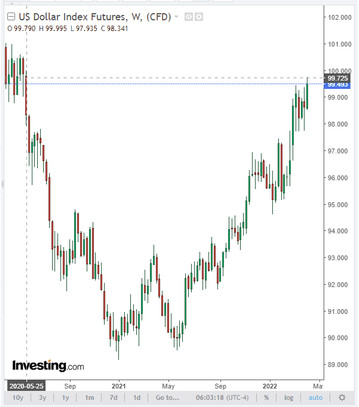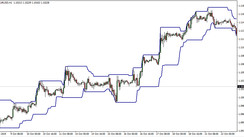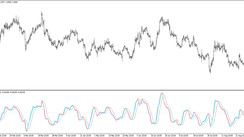As a result of the regular meeting, held at the beginning of last month, the Bank of Canada decided to raise the interest rate by 0.25% (up to 0.50%) and spoke in favor of its further increase. The Bank of Canada now expects GDP and consumer price index (CPI) growth in the 1st quarter of this year to be stronger than previously expected. Bank officials also acknowledged that the uncertainty caused by Russia's special military operation in Ukraine could dampen economic growth and fuel inflation.
The Canadian dollar reacted rather reservedly to this decision of the Bank of Canada, also due to the fact that it was widely expected and was taken into account in CAD quotes.
The strengthening of the Canadian dollar began later, from the second decade of March against the backdrop of a sharp rise in prices for oil (the main export commodity of Canada) and other energy resources.
At the time of writing this article, USD/CAD is traded near 1.2496, having declined after trying to rise above 1.2510. The important near-term resistance at 1.2510 and the key long-term support (in the form of the 200-period moving average on the monthly chart) pass through this mark. Therefore, the confirmed breakdown of the local support level 1.2460 and further decline will mark the final transition of USD/CAD into the long-term bear market zone.
Even though the Fed is planning 6 more rate hikes this year, Canada's economy is likely to be one of the best protected from the negative effects of the negative processes currently taking place in the global economy. At the same time, the Bank of Canada has also embarked on a cycle of tightening its monetary policy. Economists expect the Bank of Canada to make 3-5 more rate hikes this year and then move on to quantitative tightening.
Against the backdrop of hostilities in Ukraine and large-scale Western sanctions against Russia, many oil market analysts expect further growth in energy prices, which will continue to support the quotes of the Canadian dollar. Canada is the largest exporter of oil, and the share of oil and oil products in the country's exports is approximately 22%.
CAD may receive support today from the publication (at 14:30 GMT) of the US Department of Energy's weekly report (oil market analysts predict a decrease in US oil inventories by -2.056 million barrels).
Market participants who follow CAD quotes and USD/CAD dynamics will pay more attention to the publication on Friday (at 12:30 GMT) of the monthly report of Statistics Canada with employment data for March. In February, the number of employed rose sharply by 336.6 thousand after falling by 200.1 thousand last month, although economists expected an increase of only 160 thousand. The unemployment rate fell by 1% to 5.5%, while market forecasts suggested a decline to only 6.2%. The average hourly wage increased by 3.3% from the previous growth of 2.4%. The March report suggests further improvement in the Canadian labor market. Economists expect another decline in the unemployment rate (to 5.4%) and an increase in the number of employed by 80 thousand people.
Labor market data (along with data on GDP and inflation) are key for the central bank when planning monetary policy parameters. The improvement in these figures is thus positive for the CAD, as it indicates a positive momentum in the Canadian economy and justifies the country's central bank's tougher stance on monetary tightening. The next decision of the Bank of Canada on interest rates is scheduled for April 13, and today market participants will study the minutes from the March meeting of the Fed. Their publication is scheduled for 18:00 (GMT), and they may contain additional information about the date of the beginning of the reduction of the Fed's balance sheet, as well as the pace, structure and methods of this process, as well as the mood among Fed leaders regarding the main parameters of the central bank's monetary policy.
Fed board member Lael Brainard, who could take over as Fed vice chair, said on Tuesday the central bank is committed to pushing for inflation to slow, including by significantly reducing its $9 trillion balance sheet. The beginning of this process can be announced already at the May meeting.
In anticipation of this, the DXY dollar index rose today to 99.73, the highest level since May 2020.

If the minutes point to a less aggressive contraction, the US dollar could weaken, economists say.





